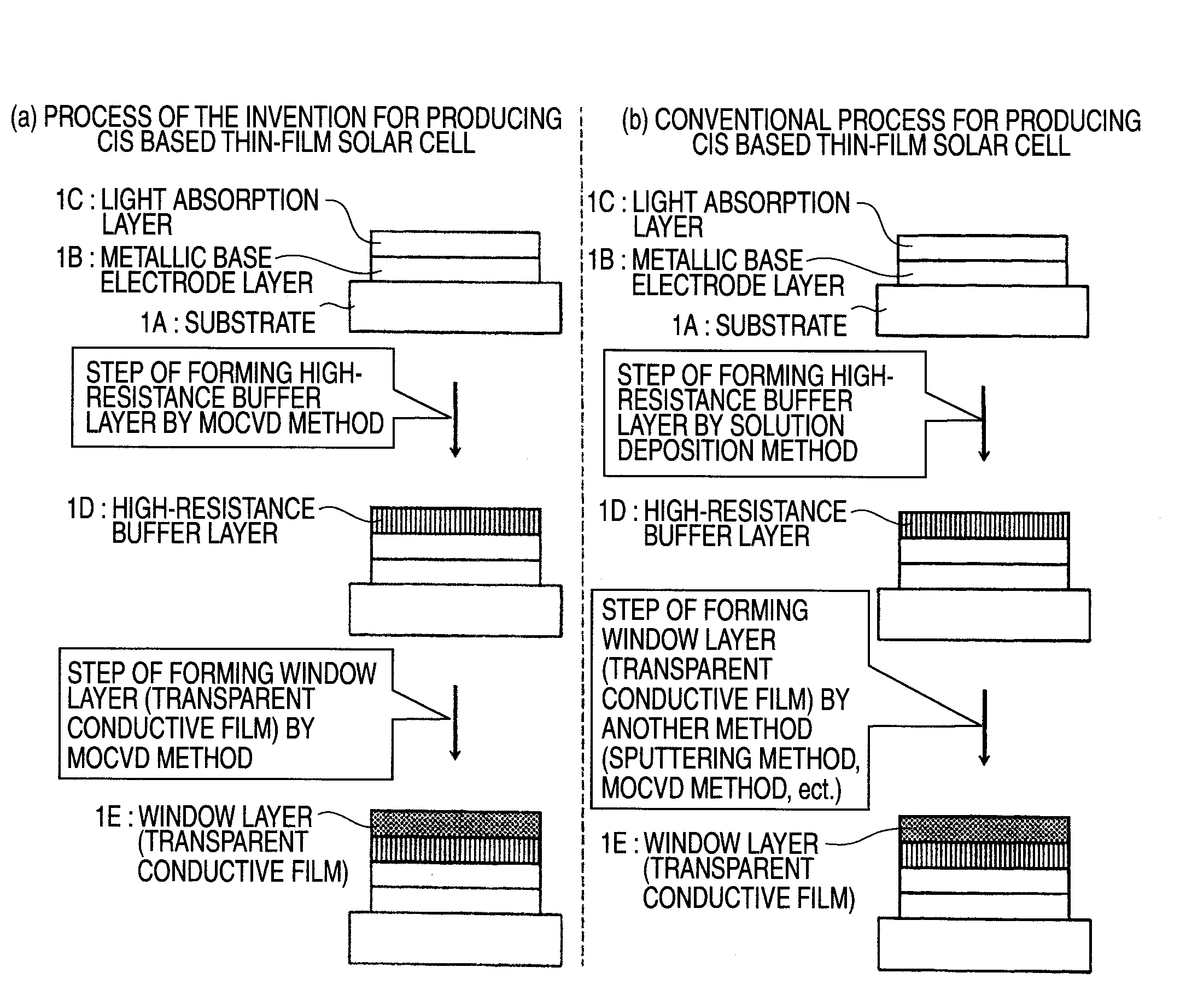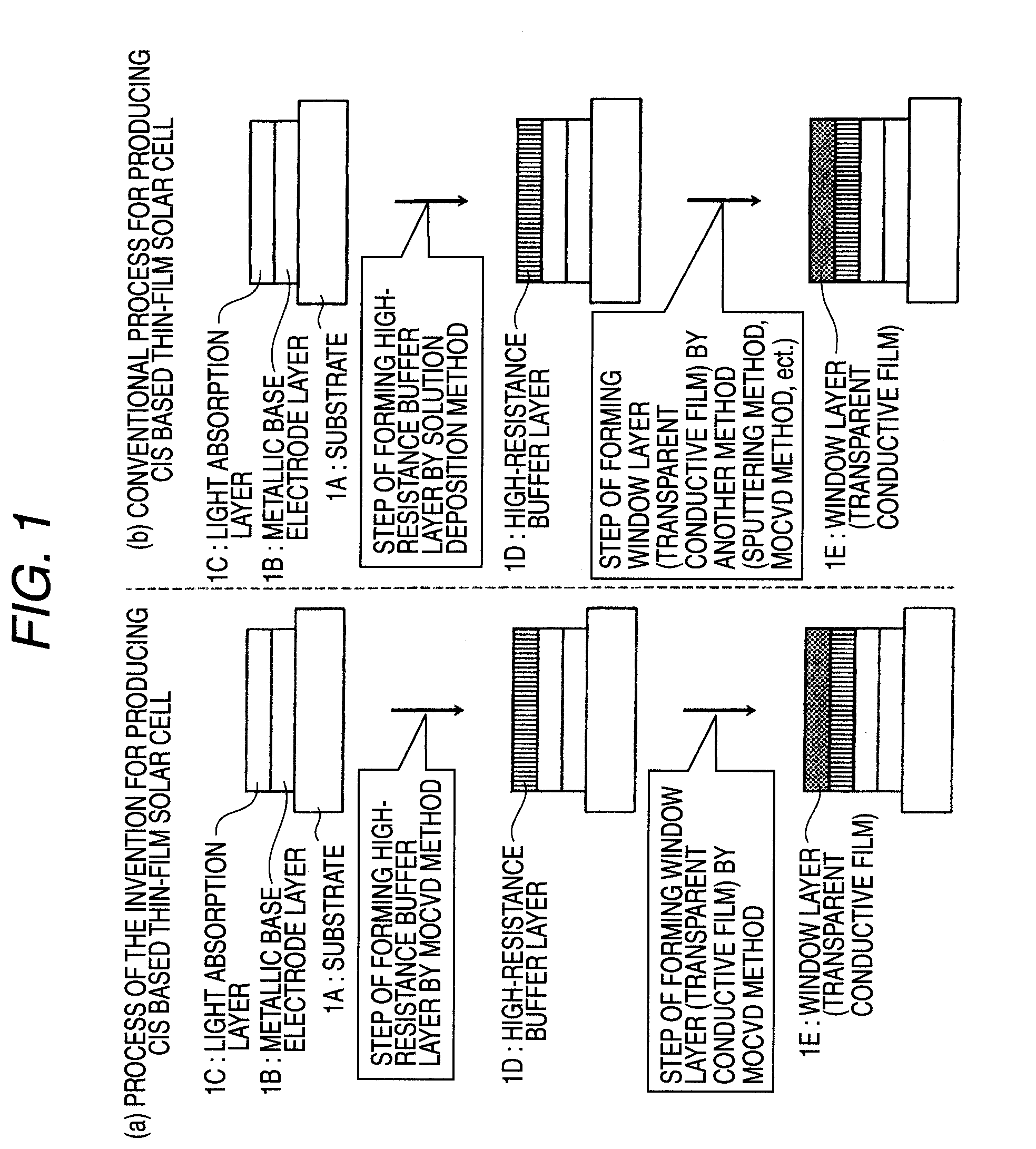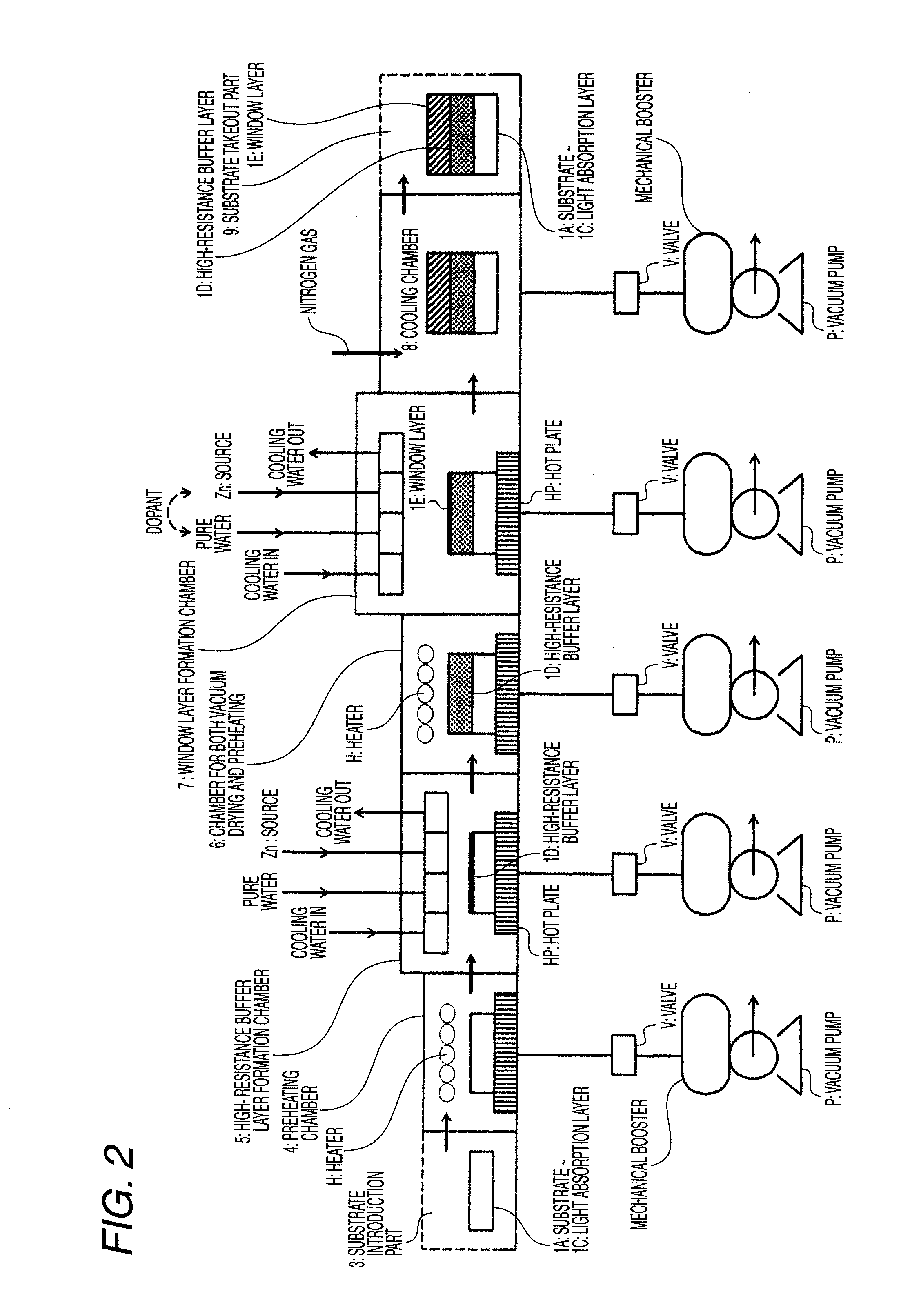Method of Successive High-Resistance Buffer Layer/Window Layer (Transparent Conductive Film) Formation for CIS Based Thin-Film Solar Cell and Apparatus for Successive Film Formation for Practicing the Method of Successive Film Formation
a technology of transparent conductive film and solar cell, which is applied in the direction of sustainable manufacturing/processing, final product manufacturing, coatings, etc., can solve the problems of waste treatment cost and the obstacle to a reduction in solar cell production cost, so as to reduce raw material cost, waste treatment cost, and production cost
- Summary
- Abstract
- Description
- Claims
- Application Information
AI Technical Summary
Benefits of technology
Problems solved by technology
Method used
Image
Examples
Embodiment Construction
[0023]Embodiments of the invention will be explained below by reference to drawings.
[0024]The invention relates to a method of successive high-resistance buffer layer / window layer (transparent conductive film) formation for a CIS based thin-film solar cell and an apparatus for successive film formation for carrying out the method of successive film formation.
[0025]As shown in FIG. 7, the CIS based thin-film solar cell is a pn heterojunction device of a substrate structure comprising a glass substrate 1A (thickness, 1-3 μm), a metallic base electrode layer 1B (a metal such as molybdenum or titanium having a thickness of 1-2 μm), a p-type CIS light absorption layer 1C, a high-resistance buffer layer 1D, and an n-type window layer (transparent conductive film) 1E which have been superposed in this order. The light absorption layer is a thin film which has a thickness of 1-3 μm and has a Cu-III-VI2 Group chalcopyrite structure having p-type conductivity. For example, it is a thin film o...
PUM
| Property | Measurement | Unit |
|---|---|---|
| thickness | aaaaa | aaaaa |
| temperature | aaaaa | aaaaa |
| temperature | aaaaa | aaaaa |
Abstract
Description
Claims
Application Information
 Login to View More
Login to View More - R&D
- Intellectual Property
- Life Sciences
- Materials
- Tech Scout
- Unparalleled Data Quality
- Higher Quality Content
- 60% Fewer Hallucinations
Browse by: Latest US Patents, China's latest patents, Technical Efficacy Thesaurus, Application Domain, Technology Topic, Popular Technical Reports.
© 2025 PatSnap. All rights reserved.Legal|Privacy policy|Modern Slavery Act Transparency Statement|Sitemap|About US| Contact US: help@patsnap.com



